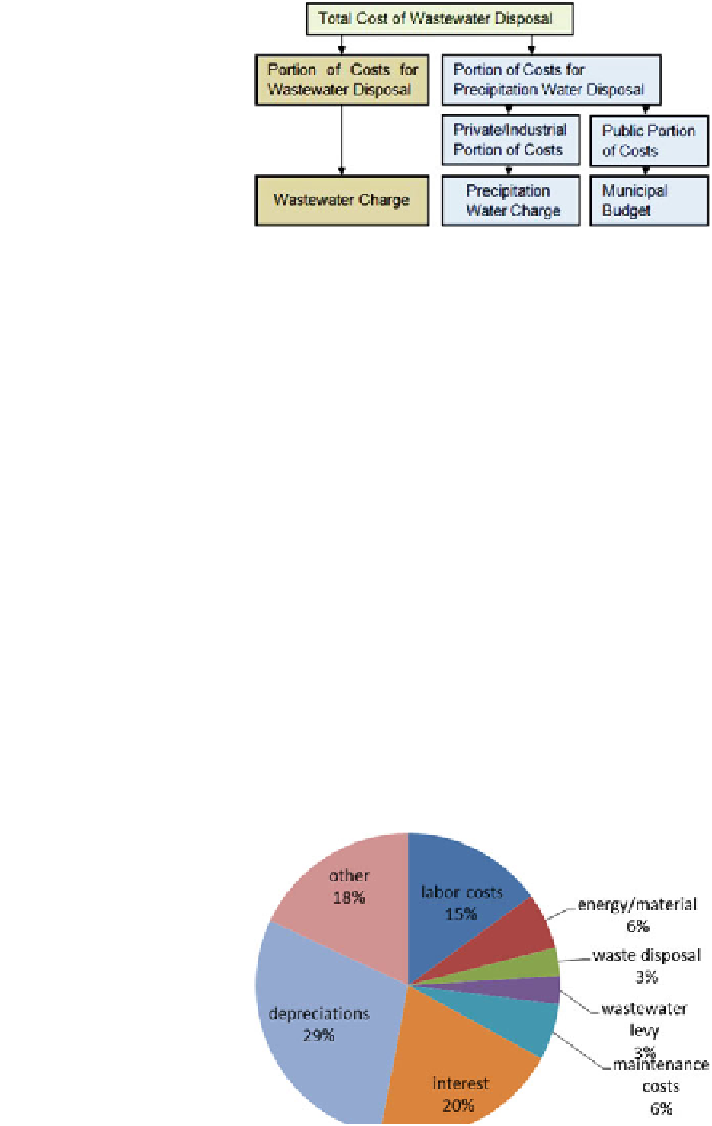Environmental Engineering Reference
In-Depth Information
Fig. 12.8 Split wastewater
charge (Althoff
2007
)
to use the split charge method whereas this may not be possible for smaller
municipalities (see Fig.
12.8
).
When consumers pay according to the split charge standard, they receive an
invoice, on which wastewater and rainwater are listed separately. In particular,
charges for water due to precipitation are calculated on the basis of square meters of
paved and drained plot area. This method of charging for wastewater is designed to
maintain fairness, as the amount of water based on the polluter pays principle refers
only to the actual water used and discharged by a consumer, who is not burdened
with a charge for rainwater that falls on the streets. The existence of a fair and
ecological wastewater charge is the justi
cation for the separation of the freshwater
standard and the split charge standard. In North Rhine-Westphalia, the split charge
standard has been implemented since May 2008, in accordance with the decision of
the Federal Administration Court (Althoff
2007
). As stated previously, the split
charge standard is used in many municipalities with a higher density of population.
Fixed and variable costs include maintenance of wastewater infrastructure
including depreciation,
interest,
labor costs, and other costs (see Fig.
12.9
).
Approximately 75
xed
costs, which do not depend on the amount of wastewater collected and treated by a
wastewater treatment plant. Thus
-
85 percent of the total costs for wastewater disposal are
fixed costs in Germany are the dominant cost
component (Althoff
2007
).
Fig. 12.9 Cost structure in
wastewater disposal in 2005
(Althoff
2007
)

Search WWH ::

Custom Search